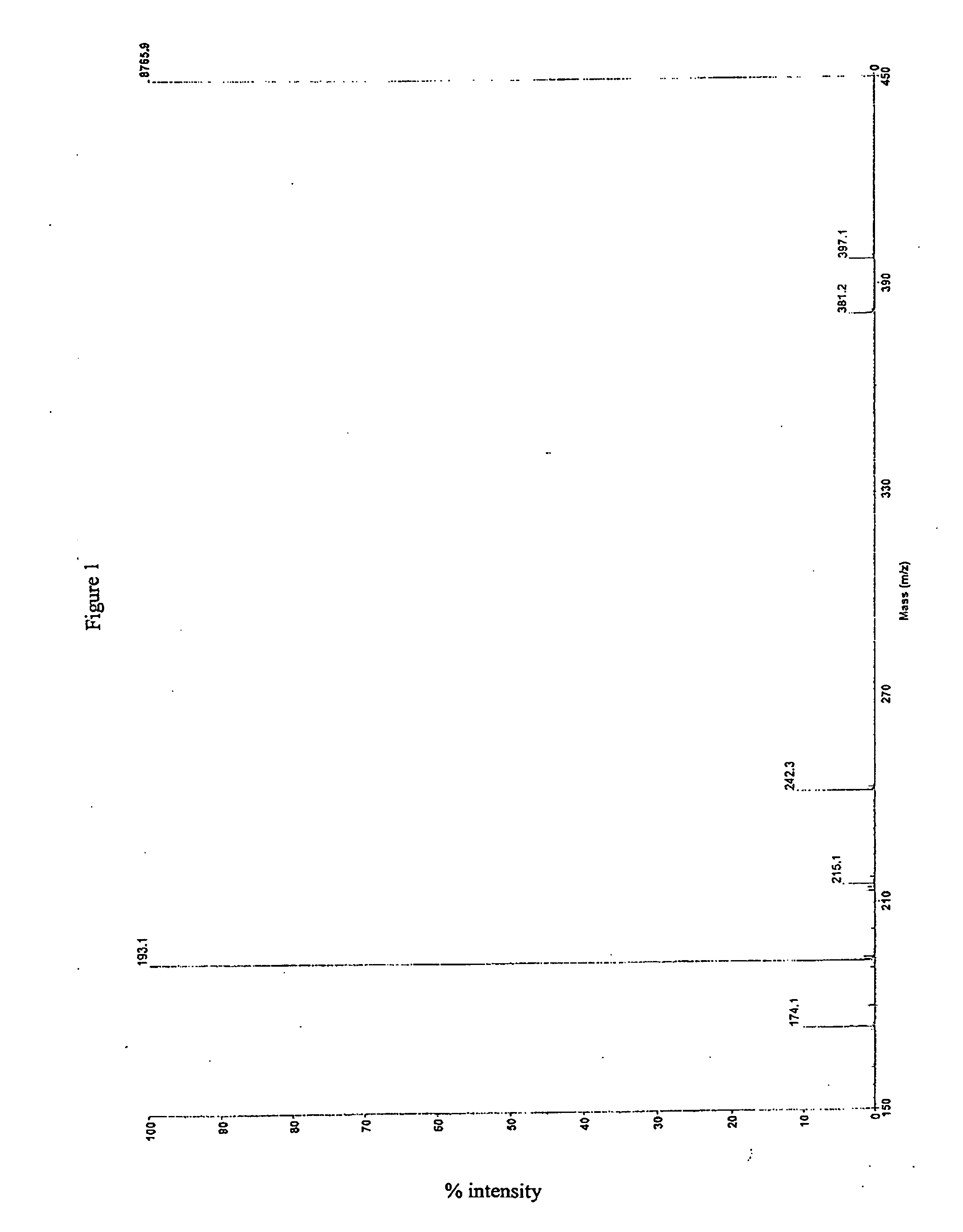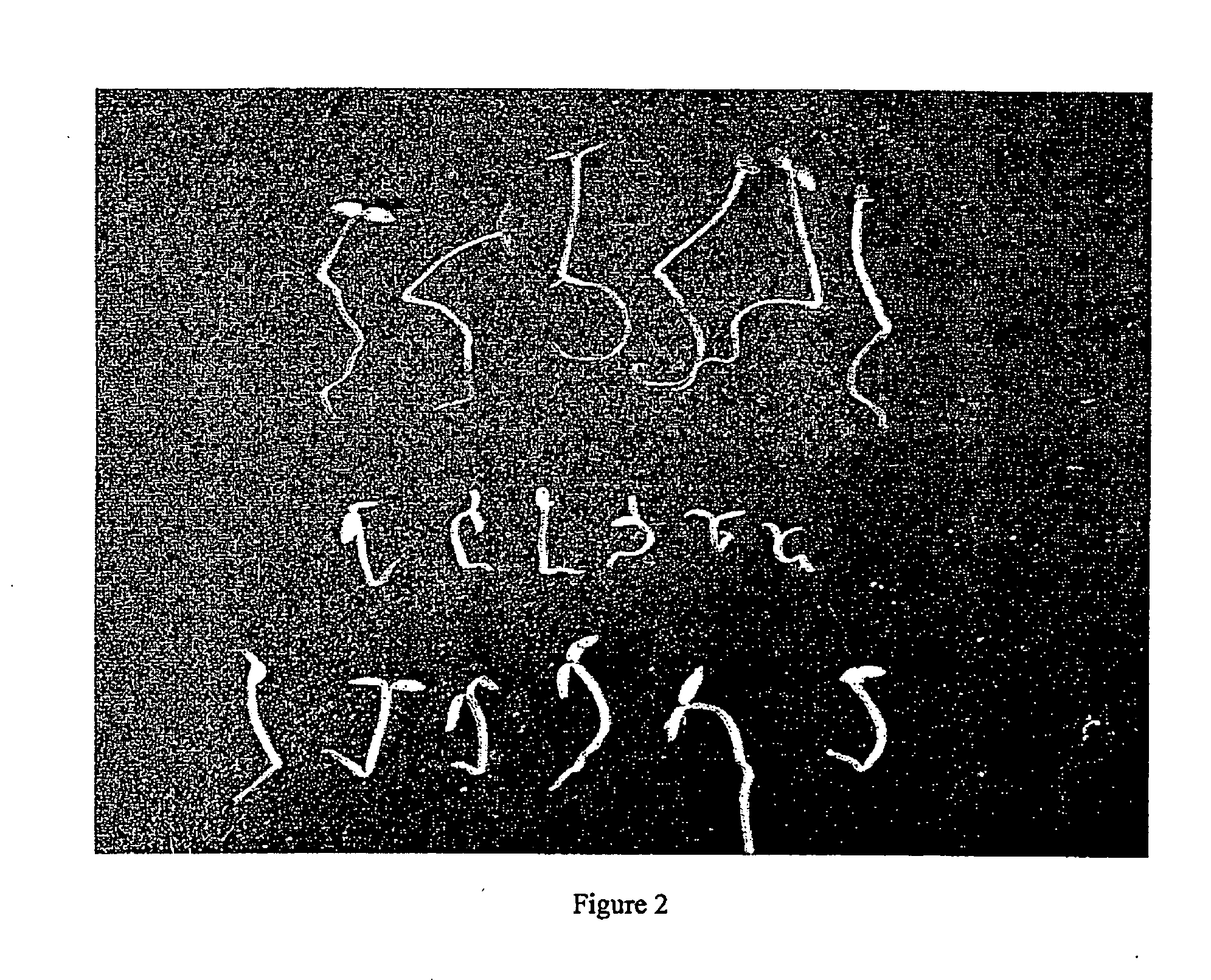Natural herbicide
- Summary
- Abstract
- Description
- Claims
- Application Information
AI Technical Summary
Benefits of technology
Problems solved by technology
Method used
Image
Examples
example 1
Production of Herbicidal Compounds
[0057] A working seed culture cryovial of Burkholderia andropogonis, isolate CW00B006C, was warmed to room temperature in a 36° C. water bath. A 1 ml aliquot of solution was transferred to each 250 ml Erlenmeyer flask containing 75 ml Nutrient Glucose Broth (Hoitinic and Sinden, 1970). Flasks were incubated on an orbit shaker for 24 hrs at 200 rpm under ambient lab condition (24±3° C.) and used as seed inoculum for 2 L Erlenmeyer flasks each containing 600 ml of filter-sterilized Hoitink-Sinden (Hoitink and Sinden, 1970) medium modified to contain 1 ml / L Trace Elements Solution HO-LE (Parks, 1993). Hoitink-Sinden (HS) cultures were incubated on an orbit shaker at 200 rpm for 4-6 days at 24±3° C. Contents of flasks were combined and centrifuged for 10 minutes at 22,500 rcf (Sorvall RC-5B superspeed refrigerated centrifuge) to pellet bacterial cells. Supernatant was collected and passed through a Nalgene 0.22 μm PES bottle-top vacuum filter to remove...
example 2
Purification and Characterization of the Active Ingredients
[0059]Burkholderia andropogonis has been reported to produce rhizobitoxine hydroxythreonine and two other compounds (Mitchell et al., 1986; Mitchell and Frey, 1988). Rhizobitoxine is a colorless (Mitchell et al., 1986) chlorosis-inducing agent also produced by the legume symbiont Bradyrhizobium elkanii (Kuykendall et al., 1992; Owens and Wright, 1965; Owens et al., 1972). The molecular weight of rhizobitoxine was reported as 190 D (Owens et al., 1972). Rhizobitoxine is herbicidal to sorghum (Sorghhum bicolor (L.)) and large crabgrass (Digitaria sanguimalis) (Owens 1973). Three Burkholderia species, B. brasiliensis, B. cepacia, and B. pseudomallei have been reported to produce exopolysaccharide (Mattos et al., 2001, Cérantola et al., 1999; and Cescutti et al., 2000). B. cepacia, and B. pseudomallei are human pathogens (Govan and Deretic, 1996; Steinmetz et al., 2000) while B. brasiliensis is a nitrogen-fixing bacterium isola...
example 3
Laboratory Bioassay of the Active Ingredients
[0064] Laboratory bioassays have been developed for assessing herbicidal activity of cell-free culture filtrates, Compound I, Compound II, Compound I and Compound II, or other forms of a natural herbicide produced by Burkholdera andropogonis, isolate CW00B006C.
[0065] For Compound I (systemic active ingredient) detection, Compound I and Compound II in the formulation of cell-free culture filtrates were diluted to 6.25% for systemic bioassay, while purified Compound I natural herbicide solutions, which had higher herbicidal activity, were diluted to 0.625% and 6.25% prior to bioassay. For Compound II (contact effect active ingredient) detection, Compound II purified from C18 column was used for contact effect bioassay
Bioassay Set Up
[0066] For systemic effect testing, each of three replicate glass Petri plates per treatment were fitted with a Whatman No. 1 filter paper and 10 chickweed (Stellaria media L. (Cyrill)) s...
PUM
 Login to View More
Login to View More Abstract
Description
Claims
Application Information
 Login to View More
Login to View More - R&D
- Intellectual Property
- Life Sciences
- Materials
- Tech Scout
- Unparalleled Data Quality
- Higher Quality Content
- 60% Fewer Hallucinations
Browse by: Latest US Patents, China's latest patents, Technical Efficacy Thesaurus, Application Domain, Technology Topic, Popular Technical Reports.
© 2025 PatSnap. All rights reserved.Legal|Privacy policy|Modern Slavery Act Transparency Statement|Sitemap|About US| Contact US: help@patsnap.com



